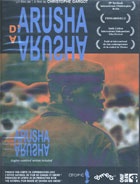
From Arusha to Arusha 2008
Distributed by National Film Board of Canada, 1123 Broadway, Suite 307, New York, NY 10010; 800-542-2164
Produced by National Film Board of Canada, Amers, Atopic
Directed by Christophe Gargot
DVD, color, 114 min.
Sr. High-General Adult
African Studies, Criminal Justice, Genocide Studies
Date Entered: 06/28/2012
Reviewed by Rob Sica, Eastern Kentucky UniversityIn 1995, the United Nations Security Council located the International Criminal Tribunal for Rwanda (ICTR) in Arusha, Tanzania. The tribunal was established the previous year in the wake of the state-coordinated genocide in Rwanda which, beginning in early April of that year, involved the killing of an estimated 800,000 Tutsi citizens over the course of approximately 100 days by the nation’s Hutu majority ethnic group. Charged with prosecuting perpetrators of genocide and serious violations of international humanitarian law, the ultimate purpose of the tribunal is to promote national reconciliation and regional peace, and it is in light of these overarching aims that From Arusha to Arusha critically examines its operation.
The film moves back and forth between Arusha and Rwanda. The material in Arusha consists of ICTR archival footage of court proceedings involving several cases, including that of Georges Ruggiu, who in 2000 pleaded guilty to his role, as a Kigali radio presenter, in inciting Hutus to kill Tutsis through his broadcasts (chilling excerpts of which appear in the film), and that of the former Director of the Cabinet of the Ministry of Defense, Colonel Théoneste Bagosora, a senior figure among the Hutu extremist in power who orchestrated the genocide. The material in Rwanda features a contrite former Hutu schoolteacher who participated in the killing, a pastor reflecting on the impact of the ICTR in fostering reconciliation, a female judge in one of the many Gacaca community courts which were established in 2001 to relieve the judicial system and its prisons overflowing with suspected perpetrators and expedite reconciliation among local communities. In addition to a commemoration ceremony in Mumbai with President Kagame, the segments in Rwanda also include scenes from a Gacaca court and a prison for alleged genocidaires.
At several points, the interviewees in Rwanda are presented with footage from the ICTR, the effect of which is to underscore, through their detached reactions, director Christophe Cargot’s concern that the ICTR has failed to promote reconciliation. Most of this material is engaging as presented, but the general dearth of relevant background information for viewers not already familiar with the history of Rwanda, how it shaped relations between Hutus and Tutsis before the genocide, Belgian colonization, and the Rwanda Patriotic Front, among other important factors, will have difficulty appreciating and evaluating much of the film’s critical purpose. Another limitation is that the ICTR is scheduled to complete its work in 2014 – at least six years beyond the film’s coverage. Recommended for larger collections which already have films (such as Ghosts of Rwanda (2004) and Shake Hands with the Devil (2004)) providing the background information needed by general audiences.
Awards
- Special Mention, Amnesty International Jury Award (Festival IndieLisboa, 2009)
- Georges de Beauregard National Prize (FIDMarseille, Sunny Side of the Doc, 2008)